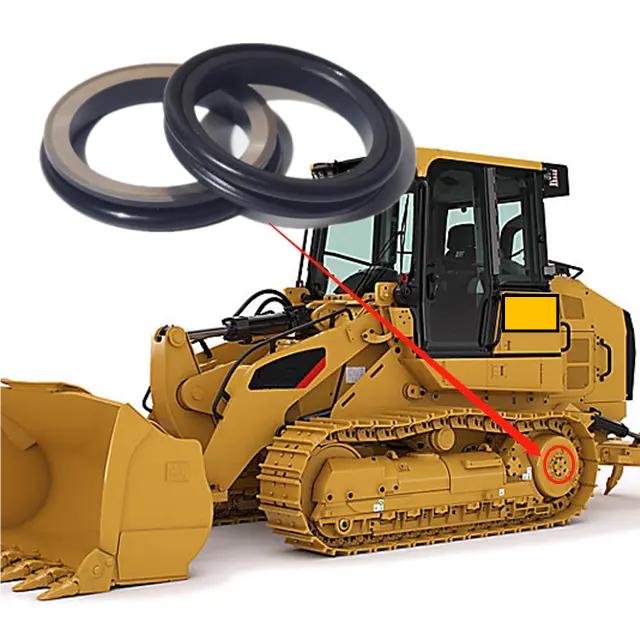Floating seal Heavy duty hydraulic travel motor seal group excavator track loader floating duo cone seal
Product material
High chromium alloy cast iron
Bearing steel forgings
Scope of application
a. This floating oil seal cannot work under the condition of maximum pressure and maximum speed at the same time.
b. Under normal working conditions, this shaft oil seal does not bear pressure.
c. Speed Cast iron: 3m/s (with lubricating oil)
100Cr6: 1m/s (with lubricating oil)
d. Temperature -40 °C - +100 °C, related to the synthetic rubber material used.
Product Features
Its advantages are stable sealing performance, reliability and long life; Wide range of sealing working parameters (working pressure up to 30 MPa, working temperature -100~200°C); It is especially suitable for sealing the gas medium in the centrifugal compressor, and can also realize no leakage to the atmospheric environment, suitable for the sealing of flammable, explosive, toxic and precious gas media
Matters needing attention
1) Before installing the floating oil seal, it is necessary to check whether the surface of the journal is too rough and whether there are scars, especially long scars along the axial direction. If the journal surface is too rough, it is easy to damage the oil seal or accelerate the 1:3 wear of the lip, damaging its sealing performance. If the surface of the journal is caused by serious blunt impact scars due to improper disassembly and assembly, it will make the lip of the oil seal and the surface of the journal loosely fit, resulting in oil leakage. In the above two cases, after surfacing the scar part, the lathe can be turned again according to the specified journal size, or a new shaft can be replaced. If the journal has only metal burrs or shaft head flying edge, file can be used to trim and smooth, to prevent the oil seal lip injury when installing the oil seal.
(2) Check whether the lip of the floating oil seal is broken, damaged or corroded. If there are these undesirable phenomena, a new oil seal should be replaced.
(3) When installing the skeleton oil seal with floating oil seal, special installation tools must be used to prevent the lip of the oil seal from being stretched and deformed or damaged by scraping. If there is no such tool, the following method can be used for installation: first, roll a layer of transparent hard plastic film (commonly known as cellophane) on the journal and even the shaft head, smear a little oil on the surface, put the oil seal into the shaft head wrapped in plastic film, evenly force the oil seal slowly push to the journal, and then pull out the plastic film. Note: Do not install the wrong direction of the lip, it should be toward the inside of the oil storage, the side with trademarks and specifications toward the outside. Because the lip 1:3 can only be one-way sealed, if the oil seal is inverted, it is bound to cause oil leakage, weakening the sealing effect or failure. Avoid putting the oil seal crooked or using a hammer and other tools to knock the oil seal surface, otherwise it is easy to cause damage to the oil seal.
(4) In the installation process of floating oil seal, keep the oil seal (especially the lip part) and the shaft neck position clean, and pay attention to do not make the oil seal self-tightening spring out of the spring slot. If the self-tightening spring is relaxed, the elastic force is weakened, and the two ends can continue to be used

















